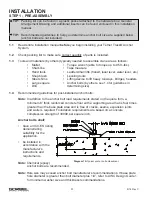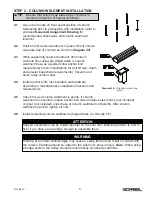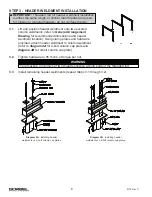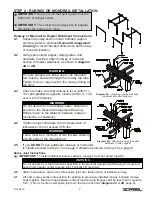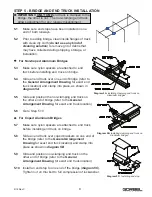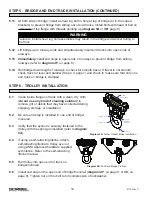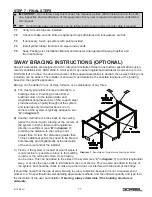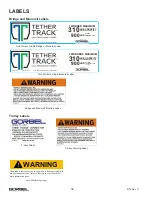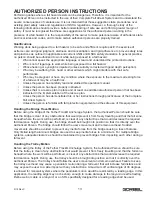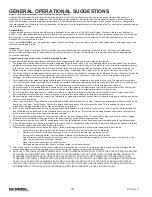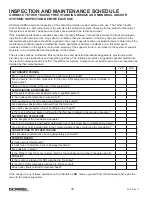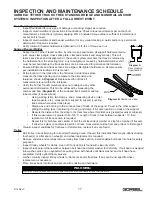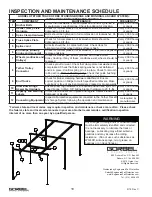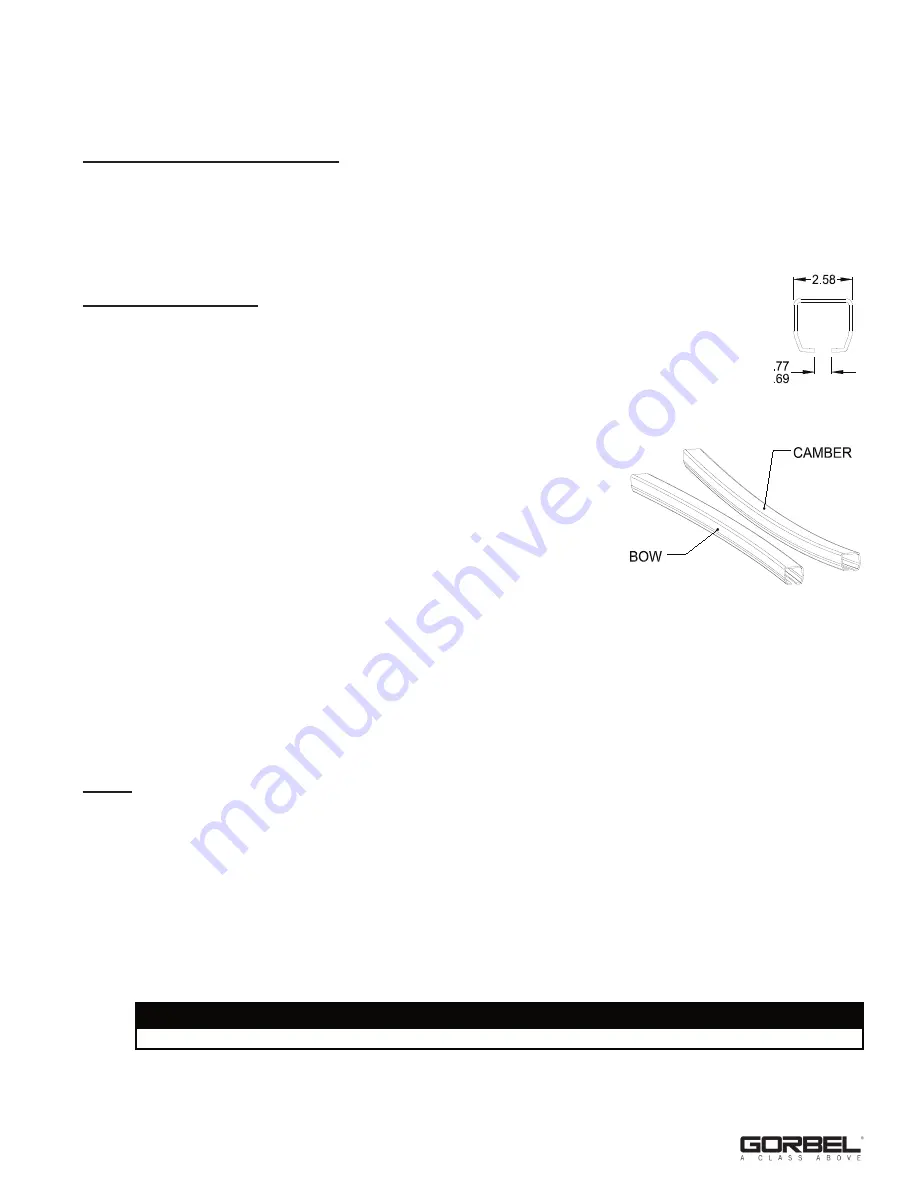
INSPECTION AND MAINTENANCE SCHEDULE
GORBEL® TETHER TRACK® FREE STANDING BRIDGE AND MONORAIL ANCHOR
SYSTEMS: INSPECTION AFTER A FALL ARREST EVENT
Free Standing Supporting Structure
• Inspect foundation for any signs of damage or cracking. Repair as required.
• Inspect column weldment connections to foundations. Check torque requirements per anchor bolt
manufacturer’s instructions (typically applying 20% of installed torque value is sufficient to determine if
anchor bolt is loose).
• Inspect column weldment and header weldment for any visual cracking in welds and/or any permanent
deformation. Repair as required.
• Verify column to header hardware is tightened to 95 ft.-lbs. of torque per nut.
Runway/Monorail/Bridge
• Support each Tether Track® section by other means and loosen all support hardware (splice
joint, spine clamp angle, truss splice plate, clamped endtruck and sway braces). This will
relieve any stress and misalignment in the anchor system members that may be retained by
the hardware from the arresting force. Any misalignment caused by hardware/member shift
must be removed before the track sections can be measured for permanent deformation.
• Ensure all fitments and track sections are aligned. Re-tighten hardware on all components
per installation instructions in this manual.
• At the location in the track where the fall arrest incident took place,
measure the track opening and compare to the dimension and
tolerance shown in
Diagram A
. Replace section of track if
measurement is not within the tolerance.
• Verify the Tether Track® members have not undergone any other
permanent deformation. This can be achieved by measuring the
camber and bow (
Diagram B
) of the enclosed track member and top
tube member (if trussed track).
• Using a string (kite), two clamps, and a measuring device (ruler,
tape measure, etc.), measure from support to support (covering
track area where arrest took place).
• Clamp one end of string to the concave face of track, at the support. Travel to the other support
pulling the string taut, not allowing it to sag, and clamp it in same location on track at the support.
• Measure the distance from the string to the track face where this distance is greatest (usually at mid-span).
• If this measurement is greater than .125” X Length of track in feet between supports / 10’ then
replacement of track section is required.
• Repeat this for both bow and camber of both the enclosed track member and top tube member (if trussed).
• If arrest took place on cantilevered portion of track, measurement will be from end of track to first support.
• Visually inspect endstops for fractures or deformation, replace if any are found.
Trolley
• Roll trolley in track listening for abnormal thumping noise. If heard, this indicates there maybe debris sticking
to wheel(s) or a flat spot on wheel(s) and wheel replacement is required.
• Remove endstop and carefully remove trolley from track section, install endstop bolt back into hole for safety
purposes.
• Inspect trolley wheels for debris, clean off if any debris is found with clean dry cloth.
• Inspect black polyurethane washer between bolt head and metal washer for deformity. If bolt head is wedged
into washer, press up on eyebolt while pulling down with hands until black washer and bolt head have
separated. Verify eyebolt freely swivels.
• Further, visually inspect trolley wheels for flat spots and/or fractures. If any are found, specific wheel
replacement is necessary.
• Place trolley back into track and secure with endstop and hardware.
17
9/18 Rev C
Diagram A.
Track Opening
Specification.
Diagram B.
Camber and Bow.
WARNING
All other components are to be inspected per their manufacturer’s instructions.


